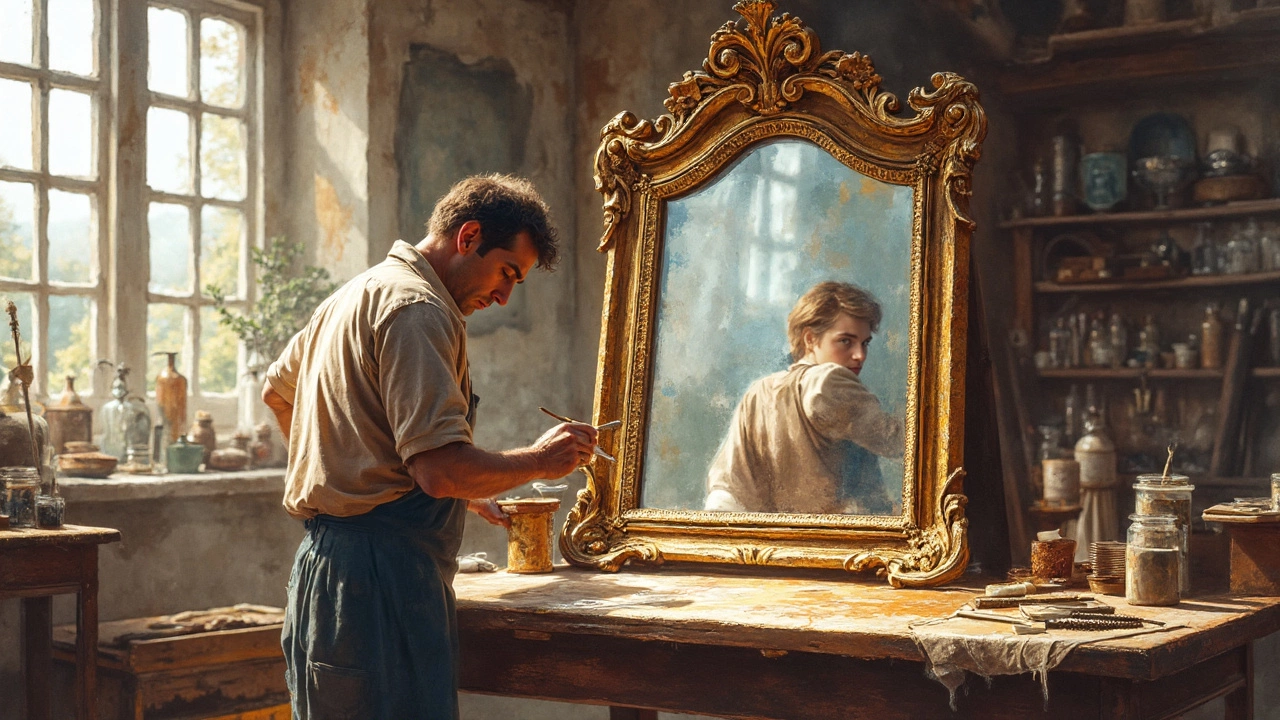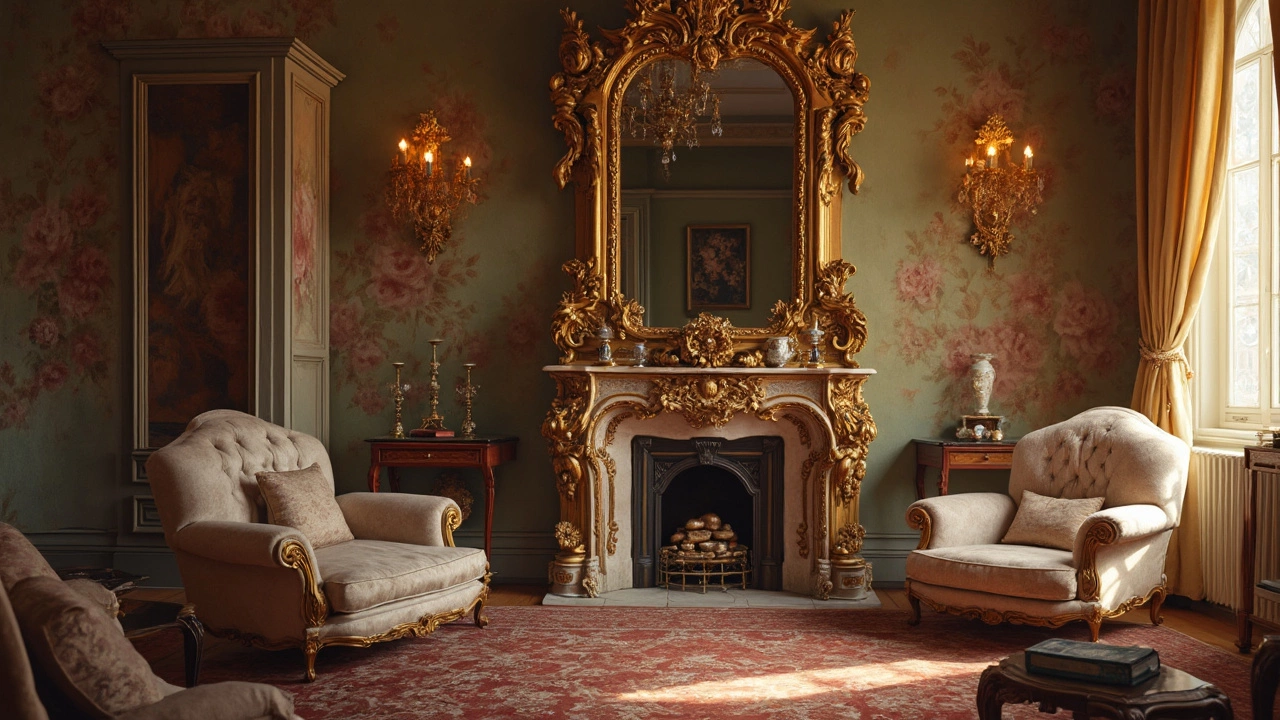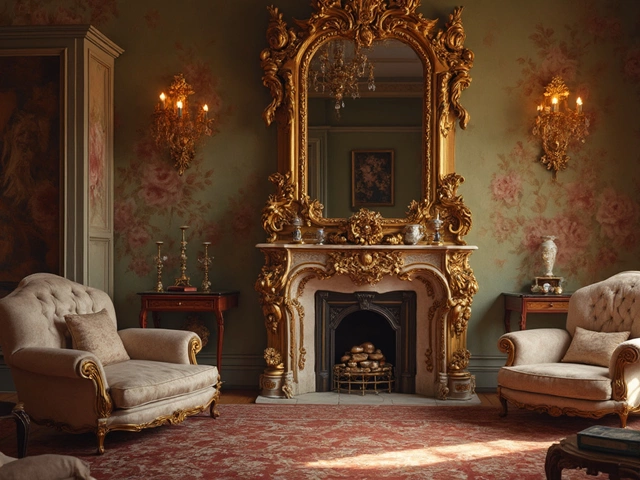So, you’re shopping for a mirror and the price tags are all over the place. How can you tell if a mirror is truly worth the splurge? Let's start with the glass itself. High-quality mirrors use glass that’s clear and free of distortions. You’ll often find they reflect light without any weird wavy lines. Plus, higher-end mirrors usually have a thicker glass. This isn’t just for durability; it also gives a sharper reflection.
Moving on to frames, this is another biggie. Expensive mirrors often feature frames made of premium materials like solid hardwood or metals with real finishes. Imagine walking into a room and that beautifully crafted frame catches your eye before you even realize it's a mirror.
Glass Quality
When it comes to discerning if a mirror is expensive, glass quality is a major factor. First off, let’s talk about the mirror thickness. High-end mirrors generally have a thicker glass, around 1/4 inch (approximately 6mm). Not only does this add to the mirror's durability, but it also ensures a clearer, sharper reflection. Cheaper mirrors might compromise on this and use thinner glass, which is more prone to bending and distortion.
Another element to consider is the quality of the reflective coating. Top-quality mirrors use coatings like silver nitrate, which provides an even reflection and is resistant to black spots, unlike basic aluminum coatings often used in cheaper options.
Clarity and Color
Check out the mirror’s clarity. Hold a piece of white paper up to it and observe the reflection color. A high-quality luxury mirror will reflect true colors without a greenish tint, which usually means it’s low-iron glass. This kind of glass is more transparent and, consequently, more expensive.
Expert Tip: Quick Distortion Test
Stand in front of the mirror and move to different angles. A good mirror will show no distortions, whereas a cheaper one may make you look wavy or bent. This distortion shows the glass isn’t of high enough quality.
The glass quality can significantly impact both the price and the aesthetic appeal of mirrors, making it an essential feature to scrutinize when you're on the hunt for an expensive mirror.
Frame Materials
The frame is more than just something to hold the mirror; it's the first thing that catches your eye. When it comes to luxury mirrors, the right materials make all the difference.
Wooden Frames
If wood is your material of choice, check for solid hardwood like oak or mahogany. These aren't just strong, they also tell you you're looking at a fine piece of craftsmanship. Makers sometimes use intricate carvings on wood frames to add that extra touch of sophistication.
Metal Frames
Metal frames are all about sleekness and durability. Materials like brass, bronzed finishes, and even stainless steel can give a modern mirror a luxurious vibe. Look for real metal finishes instead of cheap paint jobs. A brushed or polished nickel, for example, won't just look good—it'll last longer.
Composite and Alternative Materials
Some expensive mirrors incorporate composite or newer materials. High-end mirrors might use these for unique finishes that cheaply imitated materials can't replicate. They’re also often used for mirrors that have intricate decorative details, offering a broader palette of textures and colors.
Consider these mirror buying tips next time you’re on the hunt. The frame's material speaks volumes about quality. That's why paying attention here ensures you're investing in something that not only meets your design taste but also adds genuine value to your space.
Mirror Thickness
Ever checked out a mirror and sensed something was a bit off about your reflection? That's often due to the thickness of the glass. Mirror thickness is a massive factor when it comes to both the quality and the price of a mirror. Thicker mirrors not only feel more luxurious but they also provide a more accurate reflection without the 'funhouse' effects.
Standard mirrors usually come with a glass thickness of about 3mm, which can lead to some distortion over time or if the mounting isn't perfect. On the flip side, high-end mirrors often use 5mm glass. This gives a stable, clear reflection and helps the mirror last longer, making it a better investment.
Why Thickness Matters
- Durability: Thicker glass reduces the chances of warping and breaking, especially in busy areas like bathrooms or hallways.
- Clarity: With a thicker mirror, the reflective backing is more protected, offering a clearer image for years.
- Weight: Although heavier, this is an indicator of quality. It might need stronger support for mounting.
When shopping for expensive mirrors, always consider the thickness – it's a solid indicator of the mirror's quality. It's a detail that’s often overlooked but plays a crucial role in both the mirror’s performance and its lifespan.

Craftsmanship
Alright, let's talk about craftsmanship. This is a massive factor in determining whether a mirror's got that hefty price tag for a reason. You're paying for human artistry and expertise. Craftsmen who create luxury mirrors often spend years honing their skills, focusing on every tiny detail. Imagine a seasoned artist carving intricate patterns into a mirror’s frame with such finesse that it transforms the mirror into a masterpiece.
These experts use techniques that aren't just for show. High craftsmanship ensures that your mirror isn't just pretty to look at but also stands the test of time. A well-crafted mirror should resist tarnishing or warping, especially if it's going to sit in a humid bathroom environment.
Attention to Detail
Attention to detail is a key marker of excellent craftsmanship. Take beveled edges, for example. On a flimsy mirror, this might be rough or uneven, but on a high-end mirror, it’s smooth as silk, giving that refined, polished look. These details don't just improve appearance; they’re practical too, ensuring your mirror's long life and your peace of mind.
If you're still not convinced, ask yourself: Would a big-name designer put their seal of approval on just anything? Nope. That's why branded mirrors often come with a reputation backing their craftsmanship.
Personal Touch
Another thing to look for is the personal touch. Custom-made mirrors, where artisans modify designs according to your preferences, are typically more expensive. This means no two mirrors are alike, making your piece one-of-a-kind. It's like owning a piece of history that aligns with your personal style.
So, when you’re considering spending a little extra on a mirror, remember you're investing in more than just a piece of glass. You’re buying a blend of history, skill, and artistry that brings value to your space.
Brand Reputation
When it comes to picking an expensive mirror, brand reputation plays a huge role. Why? Because well-known brands have usually been around for a while, perfecting their craft and building trust with their customers.
How Big Brands Make an Impact
Big names like Restoration Hardware and Williams-Sonoma aren't just about the brand name. They’ve established themselves by consistently delivering on quality and design. You can expect a mirror from these brands to have top-notch glass and durable frames that last decades.
Why is this important? Well, investing in a mirror from a reputable brand often means you’re getting peace of mind. They offer quality assurances, and many come with great warranties. Plus, they’ve got a reputation to uphold, so they’re less likely to compromise on quality.
Not Just for the Looks
A mirror from a recognized brand usually holds its value better over time. This can be crucial if you ever decide to sell it or pass it down. It's more than a decorative piece—it's an investment that's worthwhile.
Ultimately, if you see a mirror from a top-notch brand with a hefty price tag, you're not just paying for the product. You're paying for years of innovation, reliability, and quality assurance.
| Brand | Established Year | Average Price Range |
|---|---|---|
| Restoration Hardware | 1980 | $500-$3000 |
| Williams-Sonoma | 1956 | $400-$2500 |
Decorative Details
When it comes to determining if your mirror is in the expensive league, pay attention to the decorative details. These little embellishments can set apart a regular mirror from a luxury mirror. High-end mirrors often boast intricate designs, be it on the frame or the glass itself.
A common feature in expensive mirrors is beveling. This is where the edges of the mirror are cut at an angle to give it a more finished and polished look. It’s not just about aesthetics, though—it can add a touch of elegance and depth to the piece.
Custom Artistry
Look for artistically hand-carved frames, especially those with ornate detailing. These could feature floral patterns, scrollwork, or even personalized monograms. Such intricate work generally means that a great deal of craftsmanship went into the mirror, increasing its quality and price.
If people are talking about the brand reputation, you can bet their mirrors come adorned with exquisite detailing. Some luxury brands even offer bespoke options, allowing clients to request unique decorative elements tailored to their taste.
Unique Finishes
Finishings on high-end mirrors don’t just stop at gold or silver leaf. You might find mirrors with authentic antique patinas or a distressed look that gives off vintage vibes. This isn't something you'll find in mass-produced mirrors at your local home goods store.
Speaking of uniqueness, if you come across a mirror with a limited edition number or artist signature, that’s often a good indicator of its exclusivity and value.


